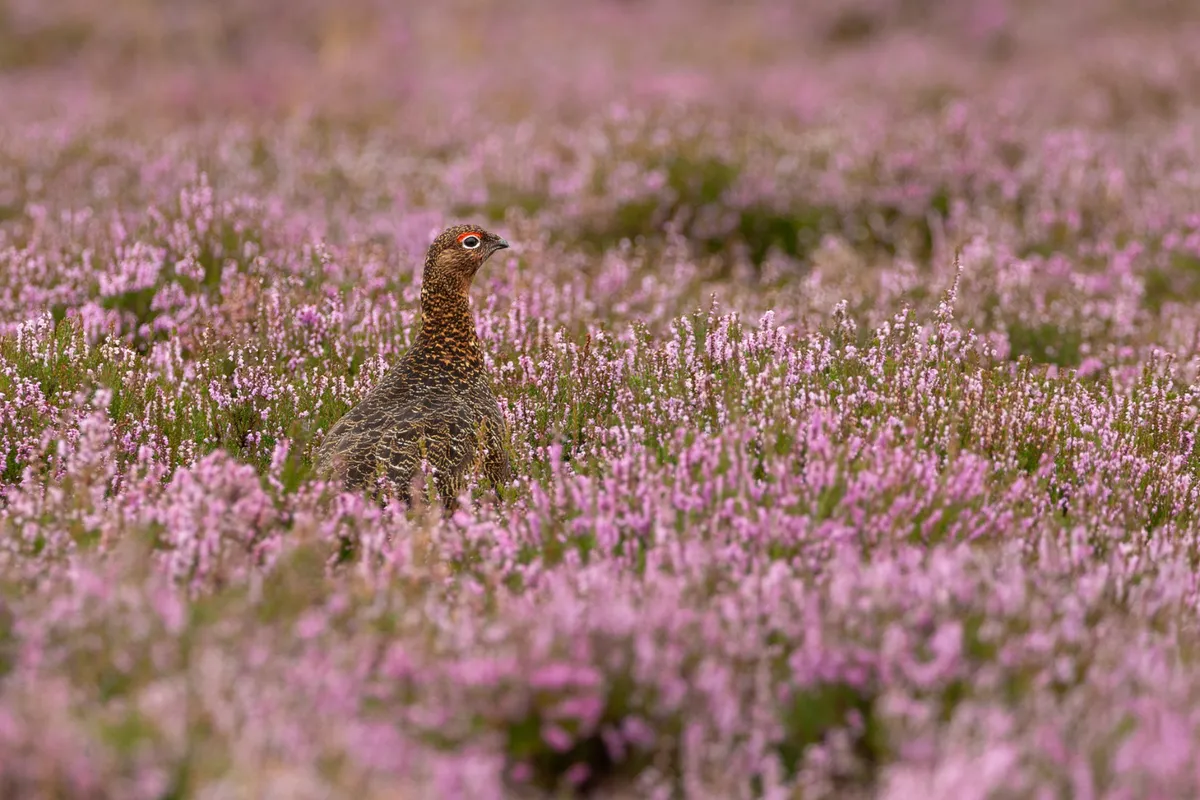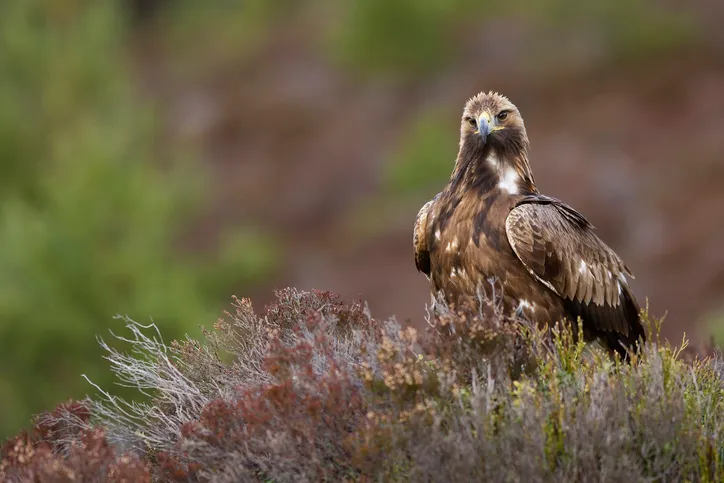Major changes are set to sweep through Scotland's grouse industry as a result of a new law that was passed by the Scottish Parliament this spring.
Under the Wildlife Management and Muirburn Bill the Scottish grouse industry will be regulated for the first time in an effort to tackle the longstanding illegal persecution of raptors across Scotland.

According to the RSPB there were 488 raptor persecution incidents in Scotland from 2007 to 2022 concentrated around grouse moors in the Highlands and Southern Uplands.
Conservation scientists and campaigners believe that birds such as golden eagles and hen harriers are being killed to prevent them from preying on red grouse, the main target species of the shooting industry.
According to the RSPB there were 488 raptor persecution incidents in Scotland from 2007 to 2022 concentrated around grouse moors in the Highlands and Southern Uplands.
Legal protections already exist for raptors under laws such as the Wildlife and Countryside Act, but RSPB Scotland says that nearly 60 gamekeepers have been prosecuted since 1990 for raptor persecution.
The new law
So, what will the new law look like and how will it stop the illegal persecution of raptors?
At the heart of the law is the entirely new requirement for all Scottish grouse moors to be licensed with the aim of finally eradicating raptor persecution.
This has been designed to act as a deterrent for landowners and shoot operators who now risk losing their licence if the illegal killing of raptors is found to have taken place on their land.

The other major change relates to muirburn, the system of the controlled burning of heather and grass to encourage new fresh growth for grouse, deer and sheep to feed on.
However, the system is highly controversial as its critics say that peat heather uplands are globally rare habitats that are damaged by the burning, which can also lead to nesting birds to desert their nests.
And as the climate crisis deepens, critics point out that peat uplands are an important, natural carbon store and when they are burned significant amounts of greenhouse gases are released.
As a result of the new law, an all-year licence will be now required to allow muirburn to go ahead and it will only be permitted on peatland in limited circumstances.
In addition, the snaring of foxes and rabbits is now banned and a licence and tagging system is being introduced for the trapping of crows, moles, stoats and weasels.
Wildlife groups have welcomed the new law:
“This is a huge win for nature and marks a significant moment in the history of land management in Scotland,” says Andrew Midgley from the RSPB.
“We hope that the new licences for grouse shooting will finally provide a meaningful deterrent that will eradicate raptor persecution.”
In response some sections of the Scottish grouse industry say that the new law goes too far and that it will damage a fragile industry that supports thousands of rural jobs.
“Licensing of grouse shooting represents a seismic change for rural estates and their employees, including gamekeepers and shepherds,” says Ross Ewing from Scottish Land & Estates the organisation representing landowners.
“The legislation goes far beyond the stated intention of deterring the persecution of raptors by introducing a broad range of relevant offences under which licences can be suspended or revoked. Many of these offences bear no connection to land managed for grouse shooting.”
Ewing adds that banning snare traps would also mean more endangered ground-nesting birds would be eaten by predators.
Some sections of the Scottish grouse industry say that the new law goes too far and that it will damage a fragile industry that supports thousands of rural jobs.
And Peter Clark, the Scotland Director of the British Association for Shooting and Conservation says that:
“We believe the final draft (of the Bill) still poses a risk to sustainable grouse moor management, predator control and muirburn and will be ruinous to the rural economy and the species that gamekeepers work to protect.”
Despite this the Scottish Government stands by the aims of the new law:
“This Bill is a significant step in our wider journey to ensure Scotland’s environment is managed sustainably,” says Scottish Agriculture Minister Jim Fairlie.
“We have struck the right balance between improving animal welfare, supporting rural businesses and reinforcing a zero-tolerance approach to raptor persecution and wildlife crime.”
- British birds of prey guide
- Guide to Britain's upland wildlife
- Could more of Scotland be community owned?
Words: Simon Birch